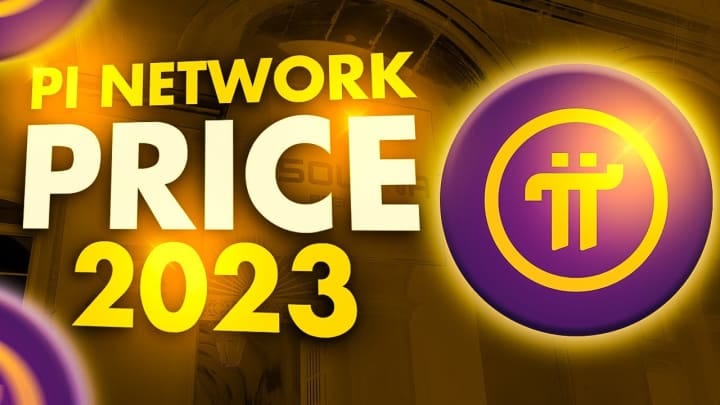Can Pi Network Handle Mass Adoption? Analyzing Scalability Issues

Executive Summary
The Pi Network, a cryptocurrency aiming for mass adoption, faces significant scalability challenges. While its novel consensus mechanism and ambition are commendable, its current architecture raises serious questions about its ability to handle the transaction volume expected with widespread user adoption. This analysis delves into the key scalability issues, examining the network’s technological limitations and potential solutions. Ultimately, the Pi Network’s success hinges on its ability to address these concerns proactively and convincingly demonstrate its capacity to scale effectively. Failure to do so could severely limit its potential and impact its long-term viability.

Introduction
Pi Network, a cryptocurrency mined through a mobile app, boasts a massive user base. However, its claim to handle mass adoption faces significant hurdles. This exploration examines the core scalability issues plaguing Pi Network, assessing its current infrastructure and future prospects. We’ll explore technical limitations and possible solutions, ultimately determining Pi’s capacity to achieve its ambitious goals. The analysis aims to provide a balanced perspective, acknowledging both the project’s potential and the critical challenges it must overcome.
Frequently Asked Questions (FAQs)
-
Q: What is Pi Network’s current consensus mechanism? A: Pi Network currently utilizes a Stellar Consensus Protocol (SCP)-based mechanism, but this may evolve as the network grows.
-
Q: How does Pi Network address the problem of energy consumption? A: Pi Network aims for energy efficiency through its mobile mining process, but the long-term energy efficiency under high transaction loads remains a concern.
-
Q: When will Pi Network be fully decentralized? A: The timeline for full decentralization is not yet publicly defined, making it challenging to assess its scalability readiness at that stage.
Network Architecture and Limitations
Pi Network’s architecture is built on a novel approach, but scalability is a major concern. The current system might struggle under heavy load, potentially leading to slow transaction speeds and network congestion.
-
Current infrastructure: Pi’s reliance on mobile mining introduces constraints in terms of processing power and network connectivity, impacting transaction throughput.
-
Scalability solutions: Implementing sharding or other layer-2 solutions could significantly improve scalability, but their implementation and effectiveness are still uncertain.
-
Transaction throughput: The number of transactions the network can process per second (TPS) is currently limited, making it vulnerable to congestion during periods of high activity.
-
Latency: The time it takes for transactions to be confirmed can be considerable, impacting user experience and hindering widespread adoption.
-
Security concerns: The reliance on mobile mining raises potential security vulnerabilities, particularly concerning device compromise and potential manipulation.
-
Data storage: As the network grows, managing the increasing volume of transaction data will become a challenge, requiring efficient storage and retrieval mechanisms.
Consensus Mechanism and its Scalability
Pi Network employs a unique consensus mechanism, but its scalability under extreme load remains to be proven. While the initial design aimed for efficiency, its ability to adapt to massive growth remains a significant question.
-
SCP adaptation: Pi’s adaptation of the SCP might not be sufficient to handle exponential growth in the number of nodes and transactions.
-
Energy efficiency trade-offs: While designed to be energy-efficient, the mechanism’s energy consumption could increase disproportionately with mass adoption.
-
Decentralization challenges: Achieving true decentralization without compromising scalability is a significant hurdle for the network.
-
Forking risks: The network might need to undergo hard forks to upgrade its capacity, which could create challenges for users and developers.
-
Security audits: Rigorous security audits are needed to ensure the consensus mechanism remains robust and resistant to attacks, especially as the network grows.
-
Future adaptability: The design needs to ensure flexibility and adaptability to evolving technological advancements and changing user demands.
Mobile Mining and its Implications
The mobile mining model, while innovative, brings inherent limitations to Pi Network’s scalability. The reliance on mobile devices impacts processing power and introduces potential vulnerabilities.
-
Resource constraints: Mobile devices have significantly less processing power compared to dedicated mining hardware, limiting transaction throughput.
-
Network dependency: Mobile mining relies on stable internet connectivity, which can be a constraint for many users, particularly in areas with limited infrastructure.
-
Battery consumption: Mining consumes battery power, potentially leading to reduced device usability and user dissatisfaction.
-
Security risks: Mobile devices are vulnerable to malware and hacking, potentially compromising the integrity and security of the network.
-
Equitable distribution: The mobile mining model raises concerns about equitable distribution of Pi, potentially leading to disparity among users based on their access to resources and technology.
-
Mining incentives: Sustaining user engagement and participation in mining, given the limited rewards, is a challenge for long-term network health.
Tokenomics and Economic Model
The Pi Network’s economic model is central to its sustainability and scalability. The long-term viability of the token and its impact on network growth are crucial factors.
-
Token value stability: Maintaining the value of the Pi token is vital for network growth and user engagement. Mass adoption could lead to volatility if not managed effectively.
-
Inflation control: Managing inflation and preventing devaluation of the Pi token is essential to prevent economic disruption and discourage user participation.
-
Transaction fees: Determining appropriate transaction fees that balance network sustainability with user affordability is a key challenge.
-
Staking mechanism: Developing a robust staking mechanism to incentivize network security and participation is critical for long-term stability.
-
Ecosystem development: Supporting the development of a vibrant ecosystem of decentralized applications (dApps) is vital to generate demand for Pi and drive adoption.
-
Mainnet transition: A well-planned and executed transition to the mainnet is essential to avoid disruptions and maintain user trust.
Decentralization Roadmap and Governance
The transition to a fully decentralized Pi Network is critical for its long-term viability and scalability. The current centralized nature poses challenges to its resilience and scalability.
-
Phased decentralization: A carefully planned and phased approach to decentralization is needed to mitigate risks and ensure a smooth transition.
-
Community governance: Establishing a transparent and efficient governance model that empowers the community is essential for long-term success.
-
Node distribution: Ensuring a geographically diverse and widely distributed network of nodes is vital for network resilience and security.
-
Security protocols: Implementing robust security protocols to protect against attacks and maintain network integrity is paramount.
-
Transparency and accountability: Maintaining transparency and accountability in all aspects of the network’s operation is critical to fostering trust.
-
Development and testing: Thorough testing and rigorous development are needed to ensure that the decentralized infrastructure is reliable and efficient.
Conclusion
Pi Network’s ambitious goal of mass adoption is commendable, but its scalability remains a significant challenge. While its innovative mobile mining model and unique consensus mechanism offer potential advantages, the current architecture presents limitations that must be addressed proactively. Success hinges on effectively tackling these issues through strategic improvements to its infrastructure, robust security measures, a well-defined decentralization roadmap, and a sustainable economic model. Addressing these concerns will determine whether Pi Network can truly deliver on its promise of becoming a widely adopted and impactful cryptocurrency. The journey from current capabilities to supporting mass adoption requires meticulous planning, ongoing development, and constant adaptation to overcome potential bottlenecks.
Keyword Tags
Pi Network, Scalability, Cryptocurrency, Mobile Mining, Decentralization


